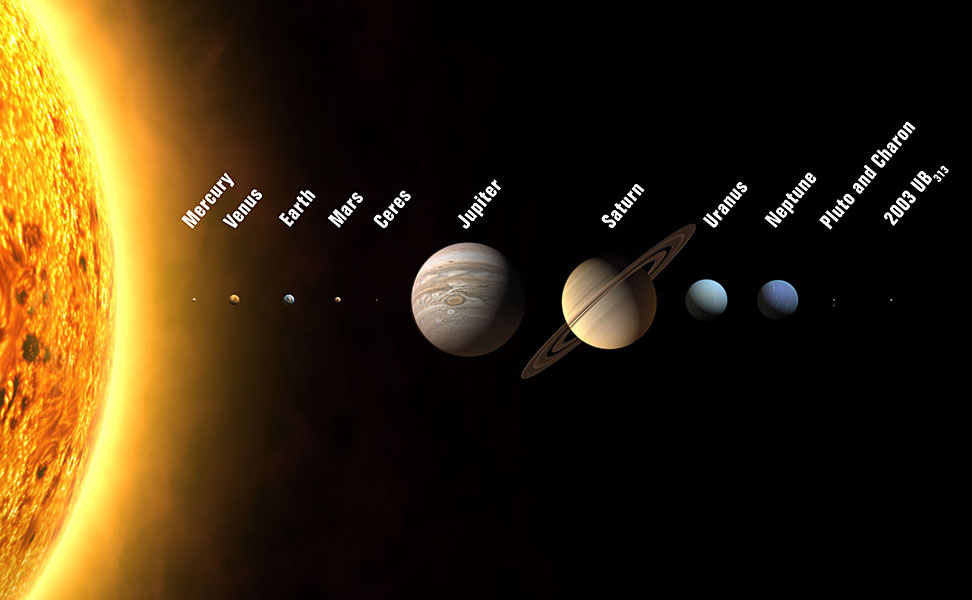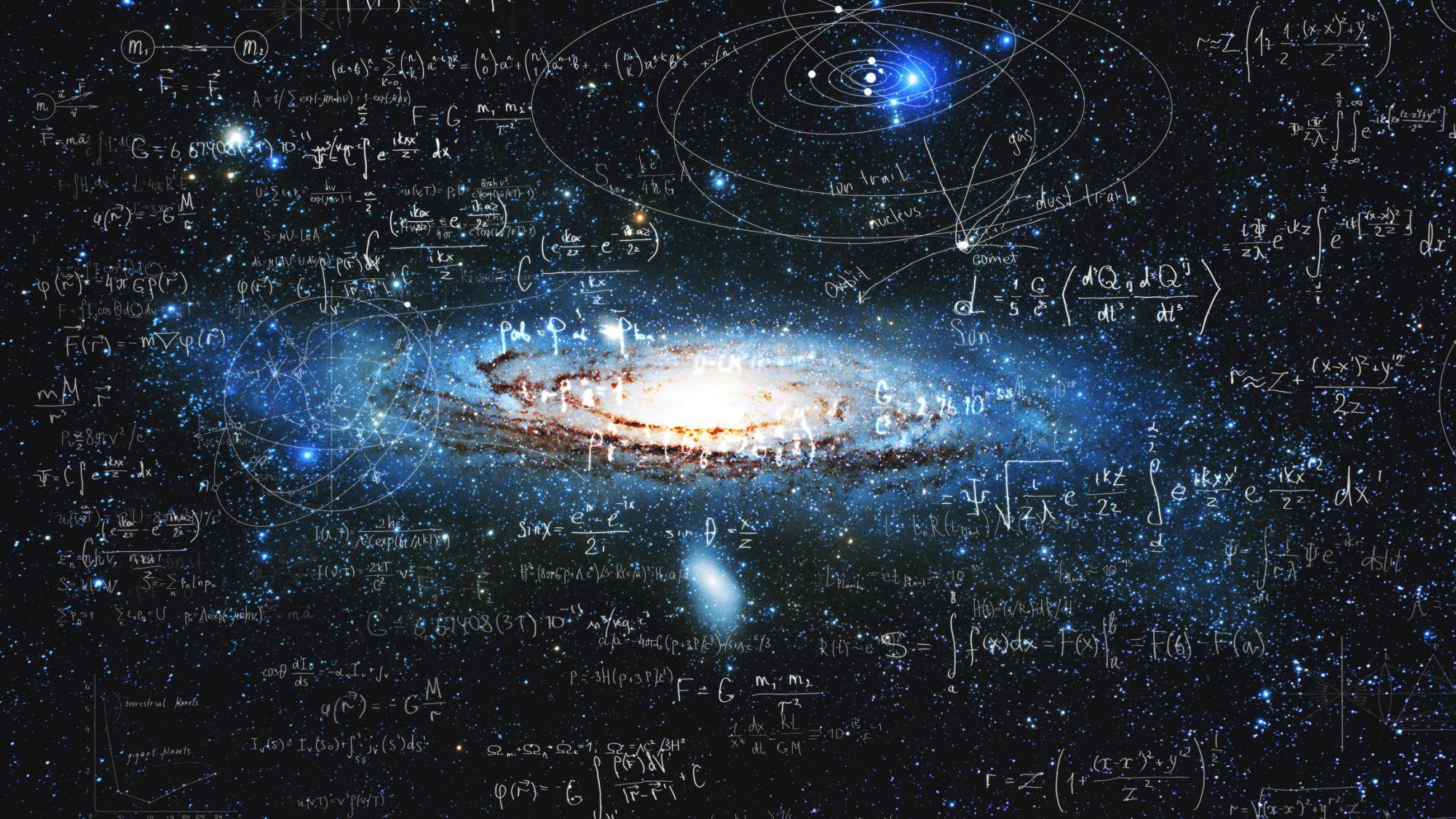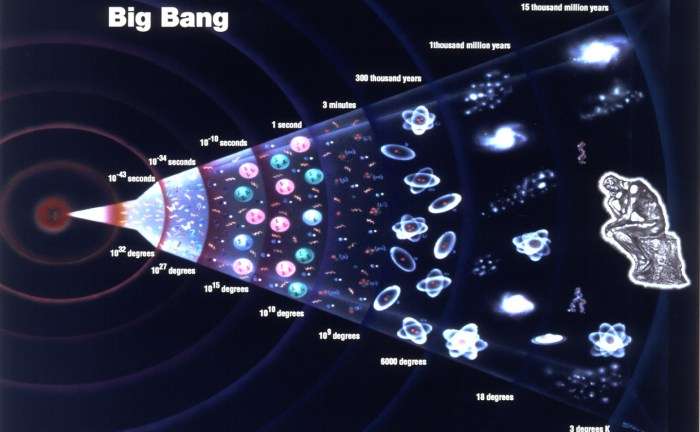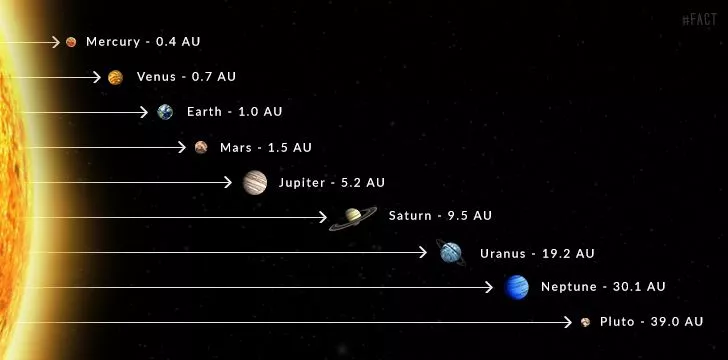Space has always fascinated people, but many find it hard to grasp its vast complexity. From distant galaxies to our own solar system, there’s so much to learn and understand.
Good news: you don’t need to be a rocket scientist to enjoy the wonders of space. This article brings you 171+ space trivia facts that are both fun and easy to understand. You’ll discover amazing details about planets, stars, space exploration, and more.
We’ll take you on a journey through the cosmos, sharing interesting tidbits about famous astronauts, groundbreaking missions, and mind-blowing celestial events.
By the end, you’ll have a wealth of space knowledge to impress your friends and spark your own curiosity about the universe.
Get ready to explore the mysteries of space in an engaging and accessible way.
Mind-Blowing Space Trivia Facts
The Solar System

-
Which planet in our solar system has the shortest day, rotating once every 10 hours?
A: Jupiter -
What is the largest moon in the solar system, even bigger than the planet Mercury?
A: Ganymede (a moon of Jupiter) -
How many Earth days does it take for Venus to complete one rotation on its axis?
A: About 243 Earth days -
What is the name of the boundary in our solar system where the sun’s influence ends and interstellar space begins?
A: The heliopause -
Which planet has the most extreme seasons in the solar system, with each season lasting about 21 Earth years?
A: Uranus -
What is the name of the cloud of comets surrounding our solar system?
A: The Oort Cloud -
How many known moons does Saturn have?
A: 82 confirmed moons (as of 2023) -
What is the name of the largest known asteroid in the asteroid belt?
A: Ceres (also classified as a dwarf planet) -
Which planet in our solar system has the highest average surface temperature?
A: Venus -
What causes the Sun’s 11-year cycle of increased and decreased activity?
A: The Sun’s magnetic field reversal -
What is the name of the largest volcano in the solar system, located on Mars?
A: Olympus Mons -
Which dwarf planet is known for its highly eccentric orbit, taking it from inside Neptune’s orbit to far beyond it?
A: Pluto -
What is the approximate temperature at the Sun’s core?
A: 15 million degrees Celsius (27 million degrees Fahrenheit) -
Which comet is famous for its roughly 75-year orbit and was last seen in 1986?
A: Halley’s Comet -
What is the name of Neptune’s largest moon, which is the only moon in the solar system with a substantial atmosphere?
A: Triton -
How many Earth years does it take for Neptune to complete one orbit around the Sun?
A: About 165 Earth years -
What is the main difference between an asteroid and a comet?
A: Asteroids are mostly rock and metal, while comets are mostly ice and dust -
Which planet has the fastest winds in the solar system, reaching speeds of up to 2,100 km/h (1,300 mph)?
A: Neptune -
What is the name of the dwarf planet discovered in 2005 that led to Pluto’s reclassification?
A: Eris -
How many Earth days does a year on Mercury last?
A: About 88 Earth days -
What phenomenon on the Sun’s surface appears as dark spots and is associated with intense magnetic activity?
A: Sunspots -
Which planet in our solar system has the most dramatic ring system?
A: Saturn
Stars and Galaxies

-
What is the name of the closest star to our solar system?
A: Proxima Centauri -
How many main stages are there in the life cycle of a sun-like star?
A: 7 (nebula, protostar, T-Tauri star, main sequence star, red giant, planetary nebula, white dwarf) -
What type of galaxy is the Milky Way?
A: Spiral galaxy -
Which constellation contains the star Betelgeuse and is easily recognizable by its “belt” of three stars?
A: Orion -
What is the name of the galaxy that will collide with the Milky Way in about 4.5 billion years?
A: Andromeda Galaxy -
What are the three main types of galaxies?
A: Spiral, elliptical, and irregular -
Which star is known as the “Dog Star” and is the brightest star in the night sky?
A: Sirius -
What is the name of the process by which stars produce energy?
A: Nuclear fusion -
How many stars are in the Big Dipper asterism?
A: 7 -
What is the name of the nearest large galaxy to the Milky Way?
A: Andromeda Galaxy -
Which constellation represents the mythical hunter and contains the stars Rigel and Betelgeuse?
A: Orion -
What is the term for a group of stars that appear close together in the sky but may not be physically close in space?
A: Asterism -
What type of star will our Sun become at the end of its life?
A: White dwarf -
Which galaxy is nicknamed the “Sombrero Galaxy” due to its appearance?
A: Messier 104 (M104) -
What is the name of the bright central region of a spiral galaxy?
A: Bulge -
Which constellation is known as the “Great Bear” and contains the Big Dipper?
A: Ursa Major -
What is the term for the process where a massive star explodes at the end of its life?
A: Supernova -
Which constellation is represented by a pair of twins in Greek mythology?
A: Gemini -
What is the name of the galaxy classification system developed by Edwin Hubble?
A: Hubble sequence or Hubble tuning fork diagram -
Which star cluster in the constellation Taurus is easily visible to the naked eye and known as the “Seven Sisters”?
A: Pleiades -
What is the estimated number of stars in the Milky Way galaxy?
A: 100-400 billion -
Which constellation is known as the “Southern Cross” and is featured on several national flags?
A: Crux
Space Exploration

-
Who was the first human to journey into outer space?
A: Yuri Gagarin -
In which year did the Apollo 11 mission successfully land humans on the Moon?
A: 1969 -
What was the name of the first artificial satellite launched into Earth’s orbit?
A: Sputnik 1 -
Who was the first woman in space?
A: Valentina Tereshkova -
What is the name of the NASA Mars rover that landed in February 2021?
A: Perseverance -
Which space shuttle disaster occurred during launch in 1986?
A: Challenger disaster -
What is the name of the first privately-developed spacecraft to carry humans to the International Space Station?
A: SpaceX Crew Dragon -
Who was the first person to walk on the Moon?
A: Neil Armstrong -
What is the name of the spacecraft that carried the first humans to orbit the Moon?
A: Apollo 8 -
Which space probe has traveled the farthest from Earth and entered interstellar space?
A: Voyager 1 -
What is the name of the first reusable spacecraft designed to carry humans?
A: Space Shuttle -
Who was the first American to orbit the Earth?
A: John Glenn -
What is the name of the telescope launched into low Earth orbit in 1990 and still operating today?
A: Hubble Space Telescope -
Which country was the first to land a spacecraft on the far side of the Moon?
A: China (Chang’e 4 mission) -
What is the name of the NASA program that aims to return humans to the Moon by 2025?
A: Artemis program -
Who was the last person to walk on the Moon?
A: Eugene Cernan -
What is the name of the first spacecraft to land on a comet?
A: Philae (part of the Rosetta mission) -
Which space agency launched the first artificial satellite?
A: Soviet space program -
What is the name of the first space station launched by the United States?
A: Skylab -
Who was the first human to conduct a spacewalk?
A: Alexei Leonov -
What is the approximate altitude of the International Space Station above Earth’s surface?
A: 400 kilometers (250 miles) -
Which NASA mission was the first to reach Pluto and its moons?
A: New Horizons
Astronomy and Astrophysics

-
What is the name of the largest optical telescope currently in operation?
A: Gran Telescopio Canarias -
What type of telescope uses radio waves to observe celestial objects?
A: Radio telescope -
What is the term for the boundary around a black hole beyond which nothing can escape its gravitational pull?
A: Event horizon -
What is the name of the supermassive black hole at the center of our Milky Way galaxy?
A: Sagittarius A -
What is dark matter?
A: An invisible form of matter that interacts gravitationally but doesn’t emit, absorb, or reflect light -
Who proposed the theory of general relativity?
A: Albert Einstein -
What is the name of the phenomenon where light from a distant object is bent by a massive object between it and the observer?
A: Gravitational lensing -
What is a pulsar?
A: A rapidly rotating neutron star that emits beams of electromagnetic radiation -
What is the name of the largest known structure in the observable universe?
A: The Hercules-Corona Borealis Great Wall -
What is the cosmological principle?
A: The assumption that the universe is homogeneous and isotropic on large scales -
What is the name of the hypothetical form of energy causing the accelerating expansion of the universe?
A: Dark energy -
What is a quasar?
A: An extremely luminous active galactic nucleus -
What is the name of the effect that causes light from objects moving away from us to shift towards longer wavelengths?
A: Redshift -
What is the estimated age of the universe?
A: Approximately 13.8 billion years -
What is a magnetar?
A: A type of neutron star with an extremely powerful magnetic field -
What is the name of the boundary around a star beyond which planets are unlikely to form?
A: Frost line or snow line -
What is the Chandrasekhar limit?
A: The maximum mass of a stable white dwarf star -
What is the name of the theory that suggests the universe expanded rapidly in its early stages?
A: Cosmic inflation -
What is a Dyson sphere?
A: A hypothetical megastructure that completely encompasses a star to capture its energy output -
What is the name of the point in a planet’s orbit when it’s closest to its star?
A: Perihelion (for objects orbiting the Sun) or periastron (for objects orbiting other stars) -
What is the Fermi paradox?
A: The apparent contradiction between the lack of evidence for extraterrestrial civilizations and the high probability of their existence -
What is a Kuiper Belt object?
A: An icy body orbiting the Sun beyond Neptune’s orbit
Theories and Discoveries

-
Who first proposed the heliocentric model of the solar system?
A: Nicolaus Copernicus -
What is the name of the theory that explains the origin and evolution of the universe?
A: The Big Bang theory -
What observation provided strong evidence for the Big Bang theory?
A: The discovery of cosmic microwave background radiation -
Who discovered the laws of planetary motion?
A: Johannes Kepler -
What is the name of the hypothetical particle that gives mass to other particles?
A: Higgs boson -
Who formulated the law of universal gravitation?
A: Isaac Newton -
What is the name of Stephen Hawking’s theory about black hole radiation?
A: Hawking radiation -
Who discovered the rings of Saturn?
A: Galileo Galilei -
What is the name of the mission that provided the first direct detection of gravitational waves?
A: LIGO (Laser Interferometer Gravitational-Wave Observatory) -
Who proposed the steady state theory as an alternative to the Big Bang?
A: Fred Hoyle, Hermann Bondi, and Thomas Gold -
What is the name of the hypothetical fifth fundamental force of nature?
A: Quintessence -
Who discovered the expansion of the universe?
A: Edwin Hubble -
What is the name of the theory that suggests the universe is constantly creating new matter?
A: Steady State theory -
Who first calculated the speed of light?
A: Ole Rømer -
What is the name of the mission that provided the first image of a black hole?
A: Event Horizon Telescope -
Who discovered the four largest moons of Jupiter?
A: Galileo Galilei -
What is the name of the theory that suggests the universe goes through cycles of expansion and contraction?
A: Cyclic model or oscillating universe theory -
Who first proposed the existence of black holes?
A: John Michell -
What is the name of the mission that provided evidence for water on Mars?
A: Mars Reconnaissance Orbiter -
Who discovered the planet Uranus?
A: William Herschel -
What is the name of the theory that suggests multiple universes exist?
A: Multiverse theory -
Who first accurately measured the Earth’s circumference?
A: Eratosthenes
Space Phenomena

-
What causes a solar eclipse?
A: The Moon passing between the Earth and the Sun -
What is the name of the phenomenon where the Earth’s magnetic field temporarily weakens and allows more solar particles to enter the atmosphere?
A: Geomagnetic storm -
What causes the aurora borealis (Northern Lights)?
A: Charged particles from the Sun interacting with Earth’s magnetic field and atmosphere -
What is a coronal mass ejection?
A: A large release of plasma and magnetic field from the Sun’s corona -
Which meteor shower is associated with Halley’s Comet?
A: The Eta Aquarids -
What is the name of the region around a planet where its magnetic field deflects the solar wind?
A: Magnetosphere -
What phenomenon occurs when a planet appears to move backwards in its orbit as seen from Earth?
A: Retrograde motion -
What is a lunar eclipse?
A: When the Earth’s shadow falls on the Moon -
What is the name of the brightest annual meteor shower?
A: The Perseids -
What causes the tides on Earth?
A: The gravitational pull of the Moon and, to a lesser extent, the Sun -
What is a gamma-ray burst?
A: An extremely energetic explosion that has been observed in distant galaxies -
What is the name of the point in Earth’s orbit when it’s farthest from the Sun?
A: Aphelion -
What is a transit in astronomy?
A: When a celestial body passes directly between a larger body and the observer -
What is the name of the hypothetical ninth planet in our solar system?
A: Planet Nine -
What is a syzygy?
A: The alignment of three celestial bodies in a straight line -
What is the name of the phenomenon where a star’s brightness fluctuates due to internal pulsations?
A: Stellar pulsation -
What is a planet’s albedo?
A: The proportion of incident light or radiation that is reflected by a surface -
What is the zodiacal light?
A: A faint, roughly triangular, whitish glow seen in the night sky extending from the horizon along the ecliptic -
What is the name of the point in the sky directly above an observer?
A: Zenith -
What is a sundog?
A: An atmospheric phenomenon that creates bright spots on either side of the Sun -
What is the name of the line that divides the illuminated and dark parts of the Moon or a planet?
A: Terminator -
What is the name of the phenomenon where the Moon appears larger near the horizon?
A: Moon illusion
Space in Pop Culture

-
Which 1968 science fiction film features a sentient computer named HAL?
A: 2001: A Space Odyssey -
What is the name of the starship in Star Trek: The Original Series?
A: USS Enterprise -
Which 1977 film begins with the text “A long time ago in a galaxy far, far away…”?
A: Star Wars: Episode IV – A New Hope -
What is the name of the 1995 film about astronauts struggling to return to Earth after a mission gone wrong?
A: Apollo 13 -
In the TV series Doctor Who, what is the name of the Doctor’s time machine?
A: TARDIS -
Which 2013 film starring Sandra Bullock and George Clooney is set in Earth’s orbit?
A: Gravity -
What is the name of the young hero in Orson Scott Card’s novel “Ender’s Game”?
A: Ender Wiggin -
Which popular video game series features a silent protagonist named Gordon Freeman?
A: Half-Life -
What is the name of the alien race in H.G. Wells’ “The War of the Worlds”?
A: Martians -
In the Mass Effect video game series, what is the name of the ancient machine race that threatens galactic civilization?
A: The Reapers -
Which 1956 film features a flying saucer attacking Washington D.C.?
A: Earth vs. the Flying Saucers -
What is the name of the space station in Stanley Kubrick’s film “2001: A Space Odyssey”?
A: Space Station V -
In the Star Wars universe, what is the name of Han Solo’s ship?
A: Millennium Falcon -
Which 1997 film, based on Carl Sagan’s novel, features a scientist making first contact with an alien civilization?
A: Contact -
What is the name of the fictional metal in the Marvel Universe that makes up Captain America’s shield?
A: Vibranium -
In Douglas Adams’ “The Hitchhiker’s Guide to the Galaxy”, what is the answer to the ultimate question of life, the universe, and everything?
A: 42 -
Which 1982 film features an alien who is accidentally left behind on Earth?
A: E.T. the Extra-Terrestrial -
What is the name of the space exploration video game that allows players to build and fly their own rockets?
A: Kerbal Space Program -
In the TV series Firefly, what is the name of the ship captained by Malcolm Reynolds?
A: Serenity -
Which 1979 film features the tagline “In space, no one can hear you scream”?
A: Alien -
What is the name of the planet that Superman comes from?
A: Krypton -
In the “Dune” universe created by Frank Herbert, what is the name of the desert planet?
A: Arrakis
Fun Facts and Oddities

What happens to astronauts’ height when they go to space?
A: They grow taller, typically by about 2 inches
What does space smell like, according to astronauts?
A: Many describe it as smelling like seared steak, hot metal, or welding fumes
What is the hottest planet in our solar system?
A: Venus, despite Mercury being closer to the Sun
How long would it take to fall through the Earth if it were possible to dig a hole through its center?
A: About 42 minutes
What is the Great Red Spot on Jupiter?
A: A giant storm that has been raging for at least 400 years
How many Earth years does it take for Pluto to complete one orbit around the Sun?
A: About 248 Earth years
What is a light-year?
A: The distance light travels in one year, approximately 9.46 trillion kilometers
What is the name of Earth’s second moon?
A: Cruithne (although it’s more accurately described as a quasi-satellite)
How many times would Saturn float if there was a bathtub big enough to hold it?
A: Saturn would float in water due to its low density
What is the name of the largest known star in the universe?
A: UY Scuti (as of current knowledge)
How many Earths could fit inside Jupiter?
A: About 1,321 Earths could fit inside Jupiter
What is the fastest spinning planet in our solar system?
A: Jupiter, which completes a rotation in just under 10 hours
How many times larger is the Sun compared to Earth?
A: The Sun’s volume is about 1.3 million times that of Earth
What is the temperature at the surface of Venus?
A: About 462°C (864°F), hot enough to melt lead
How long does it take for light from the Sun to reach Earth?
A: About 8 minutes and 20 seconds
What is the name of the closest known exoplanet to Earth?
A: Proxima Centauri b
How many moons in our solar system are larger than Mercury?
A: Two – Ganymede and Titan
What is the name of the largest canyon in the solar system?
A: Valles Marineris on Mars
How old is the oldest known star in the universe?
A: About 13.6 billion years old (HD 140283, nicknamed Methuselah star)
What percentage of the universe is dark matter?
A: Approximately 27%
How many stars are born and die each day in the observable universe?
A: Estimates suggest about 275 million stars are born and die each day
What is the name of the largest known void in the universe?
A: The Boötes void, also called “The Great Nothing”
How fast does the Milky Way galaxy travel through space?
A: About 2.1 million kilometers per hour relative to the cosmic microwave background radiation
What is the approximate number of galaxies in the observable universe?
A: Recent estimates suggest there are about 2 trillion galaxies
Conclusion
As we journey through the vast space, we’ve uncovered some interesting facts about our solar system, distant galaxies, and groundbreaking discoveries.
From the scorching surface of Venus to the icy depths of the Kuiper Belt, space never ceases to amaze us. We’ve explored the history of space exploration, delved into complex astrophysics concepts, and even touched on how space has captured our imagination in popular culture.
But why does this matter? Understanding space helps us appreciate our place in the universe and inspires future generations of scientists and explorers.
It pushes the boundaries of human knowledge and technology, often leading to unexpected benefits here on Earth.
What’s next? Keep exploring!
Whether it’s stargazing on a clear night or diving deeper into astronomy books, there’s always more to learn about the wonders of space.

